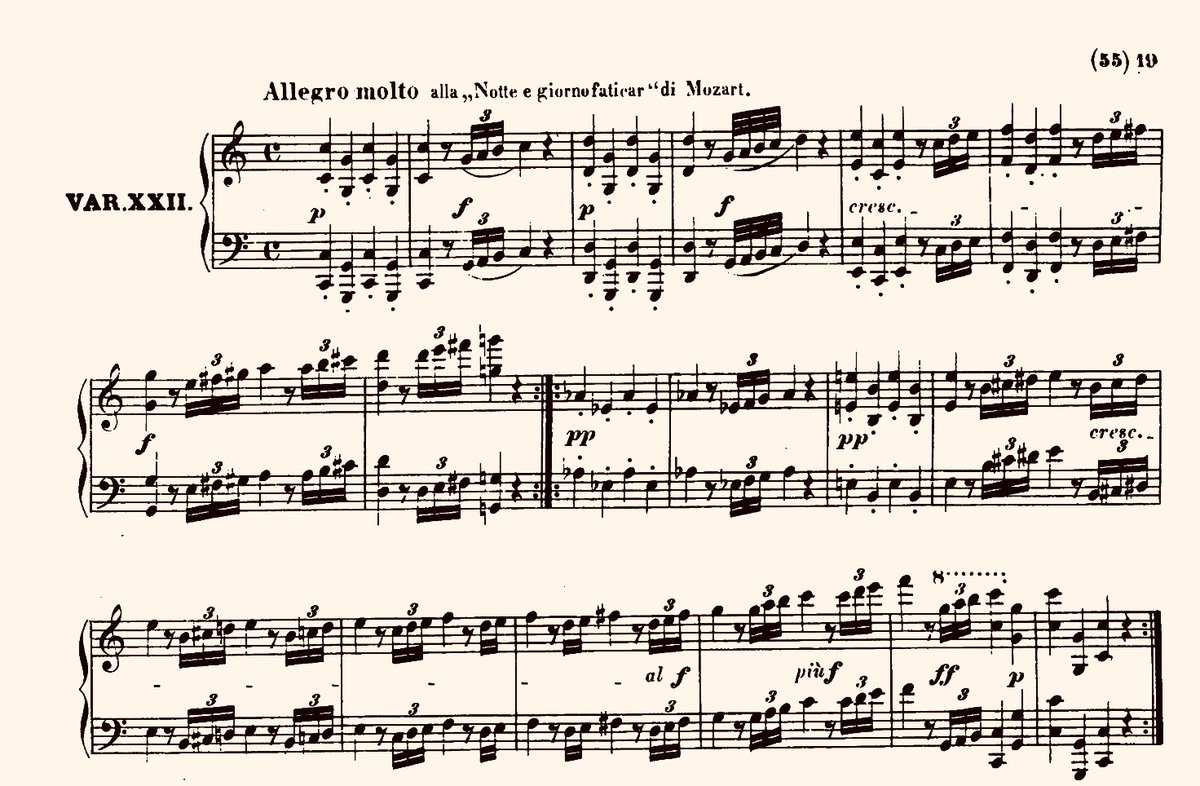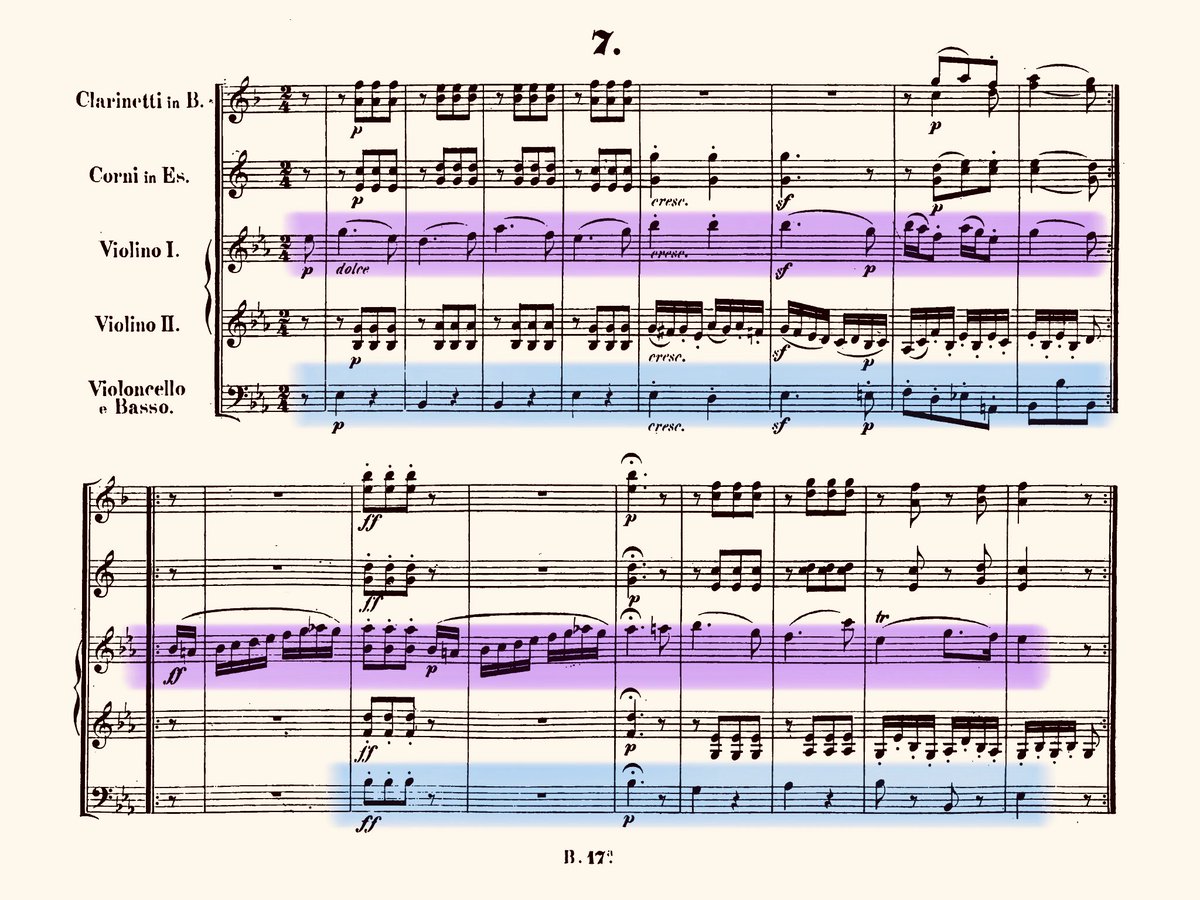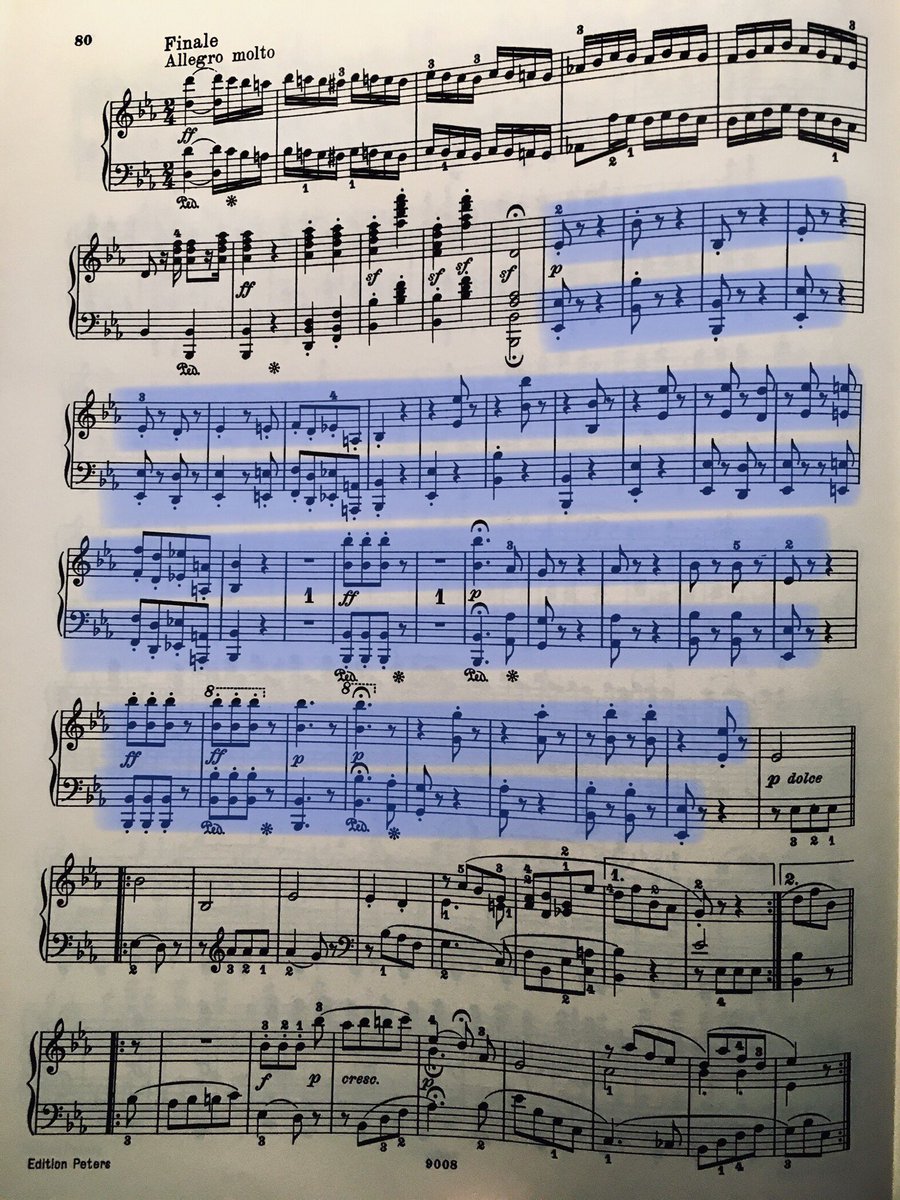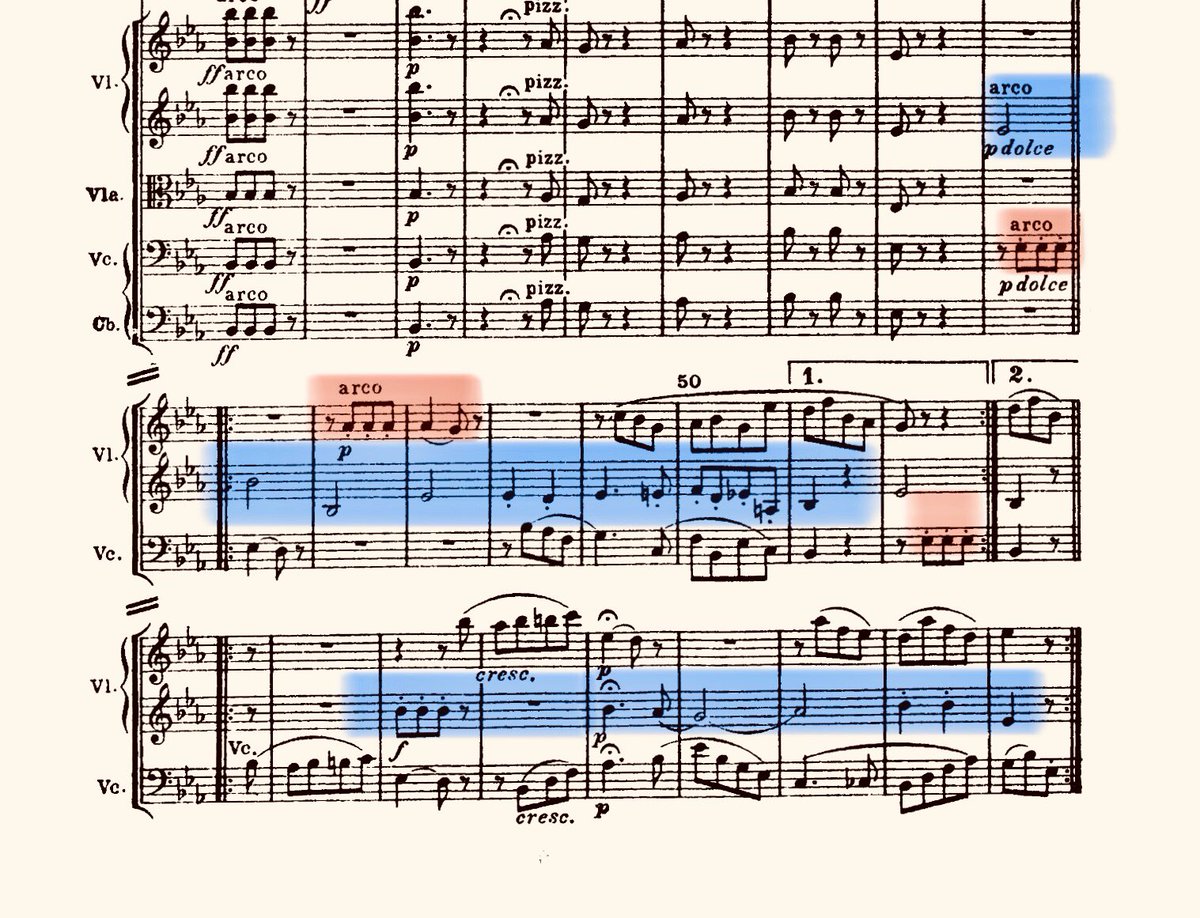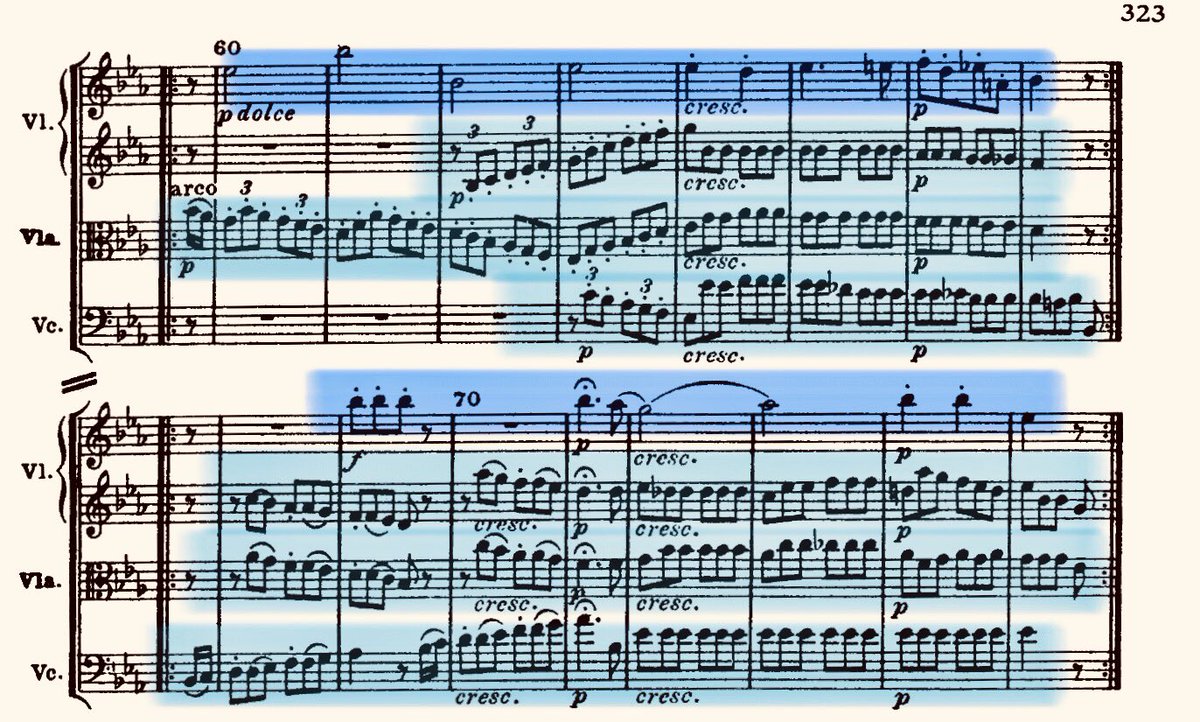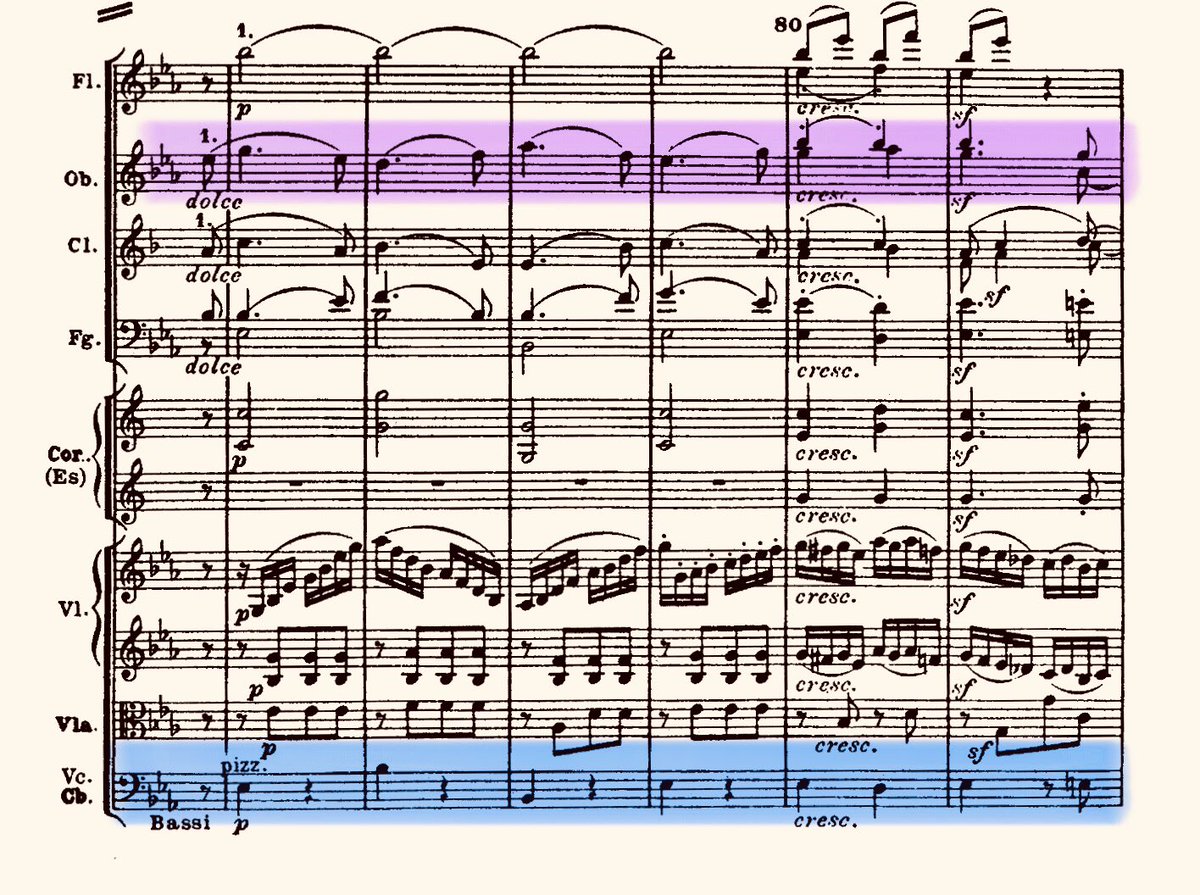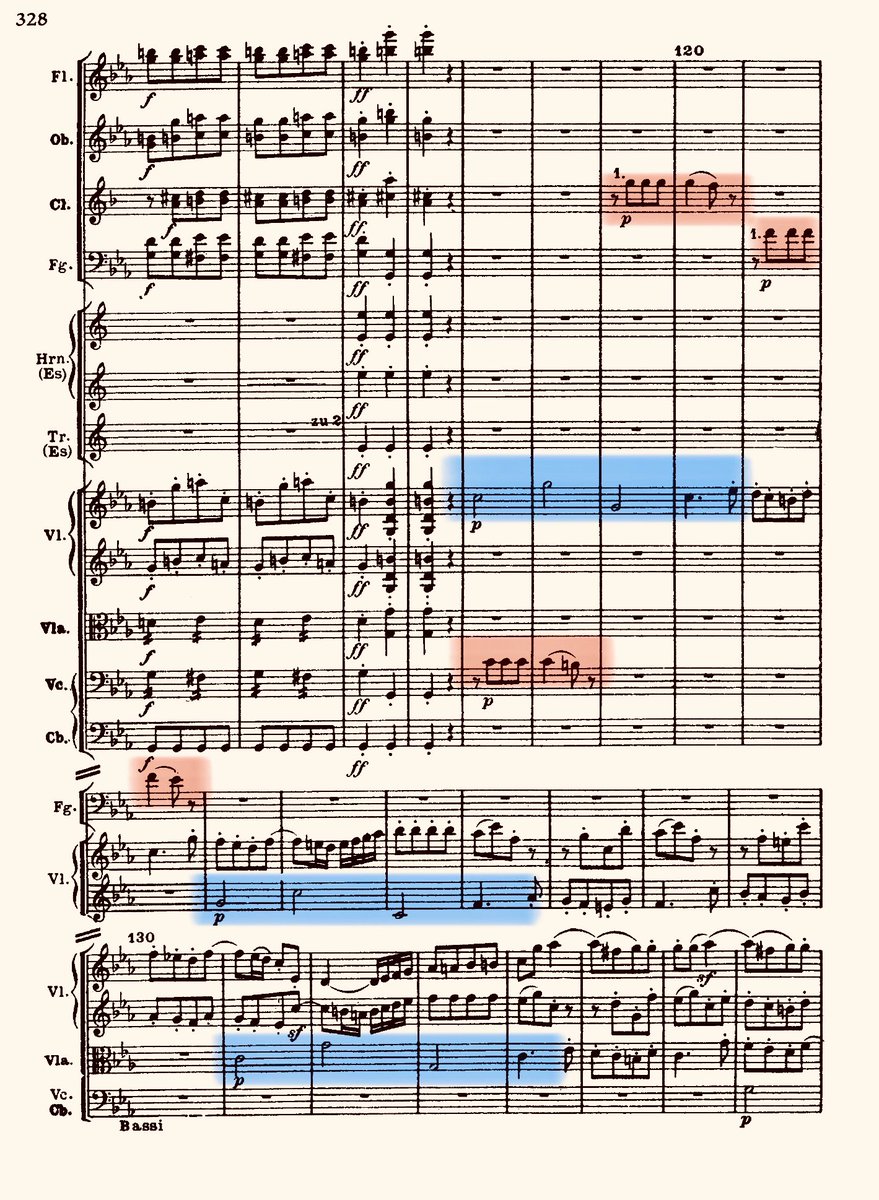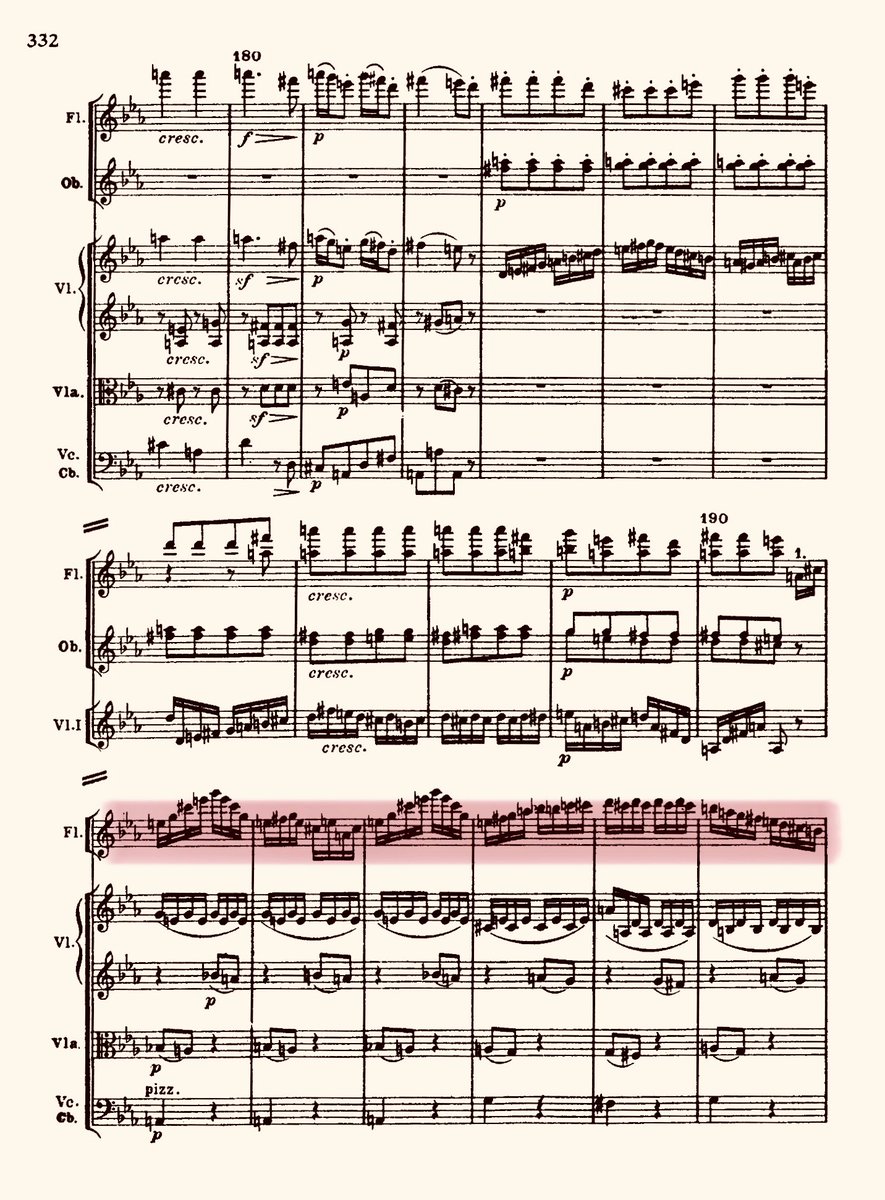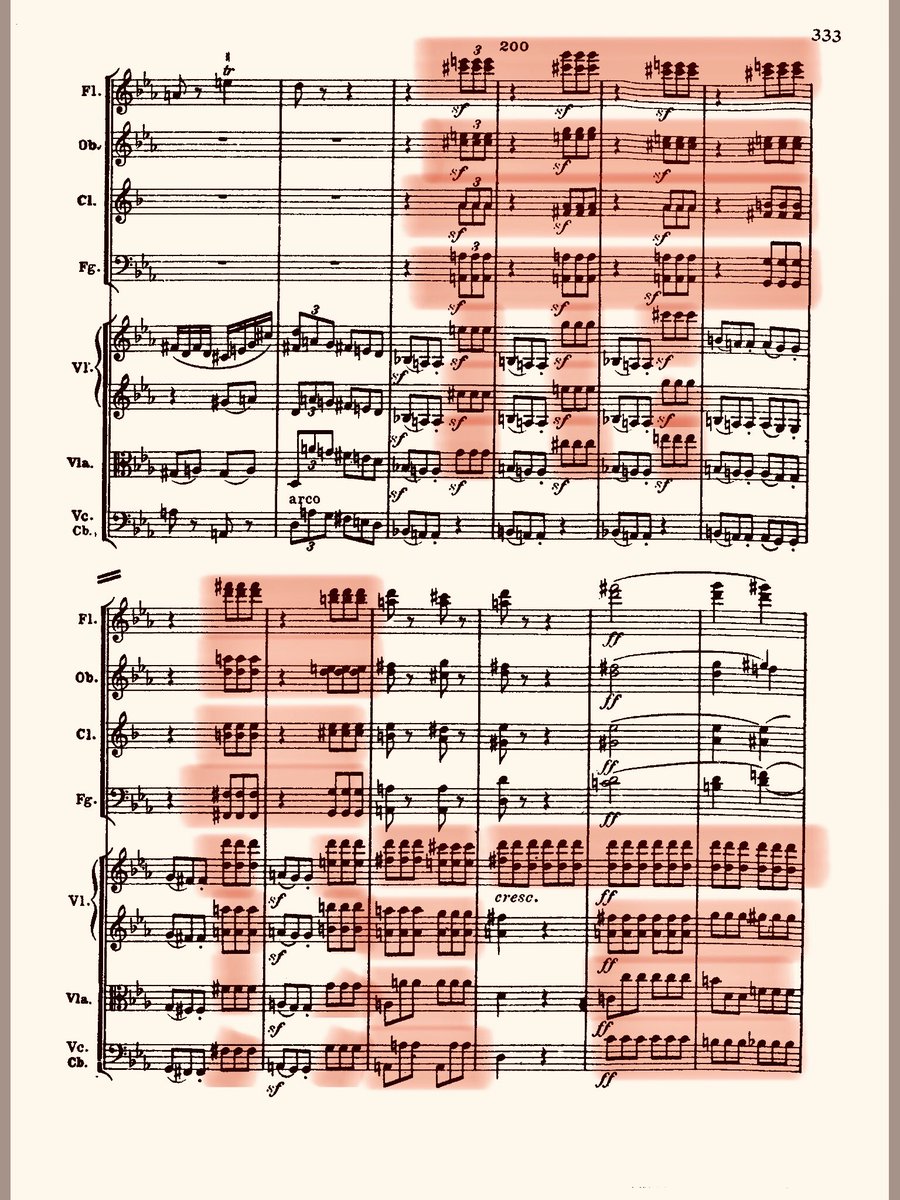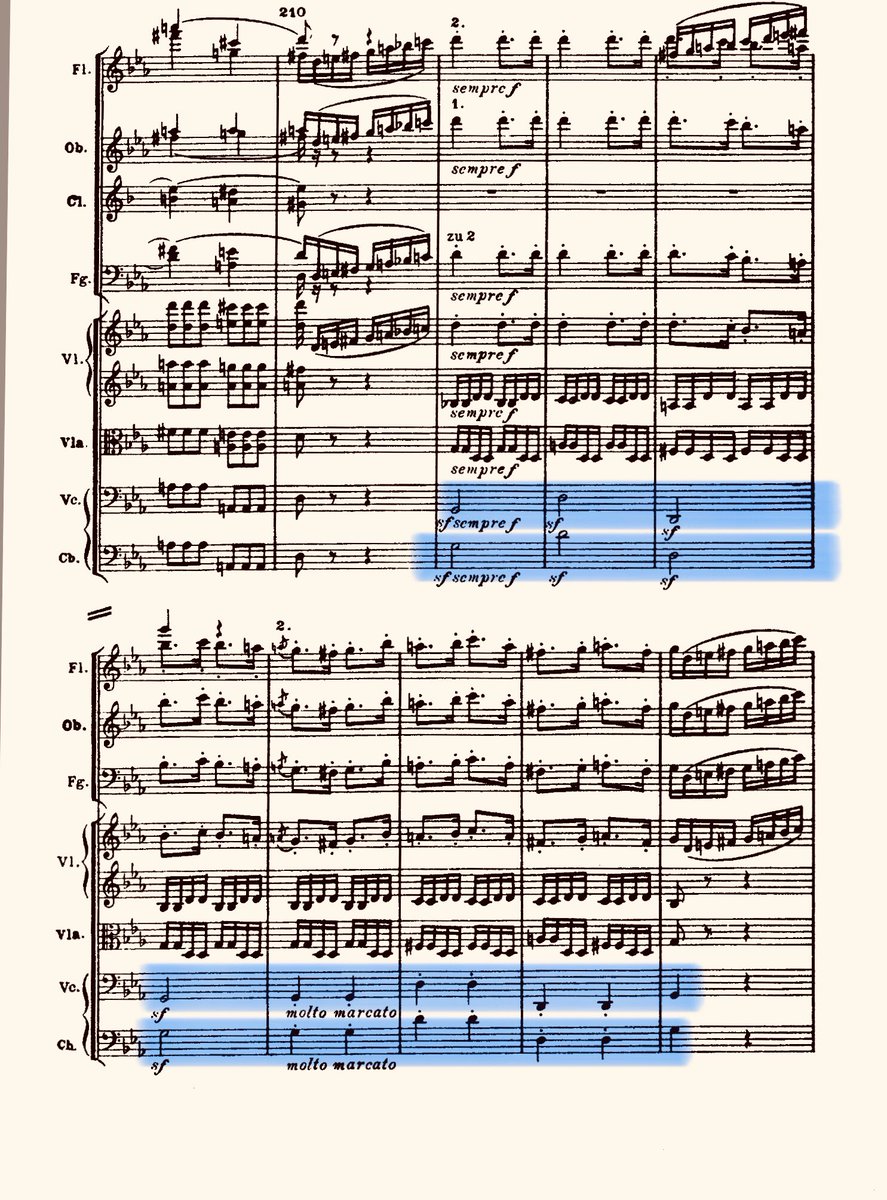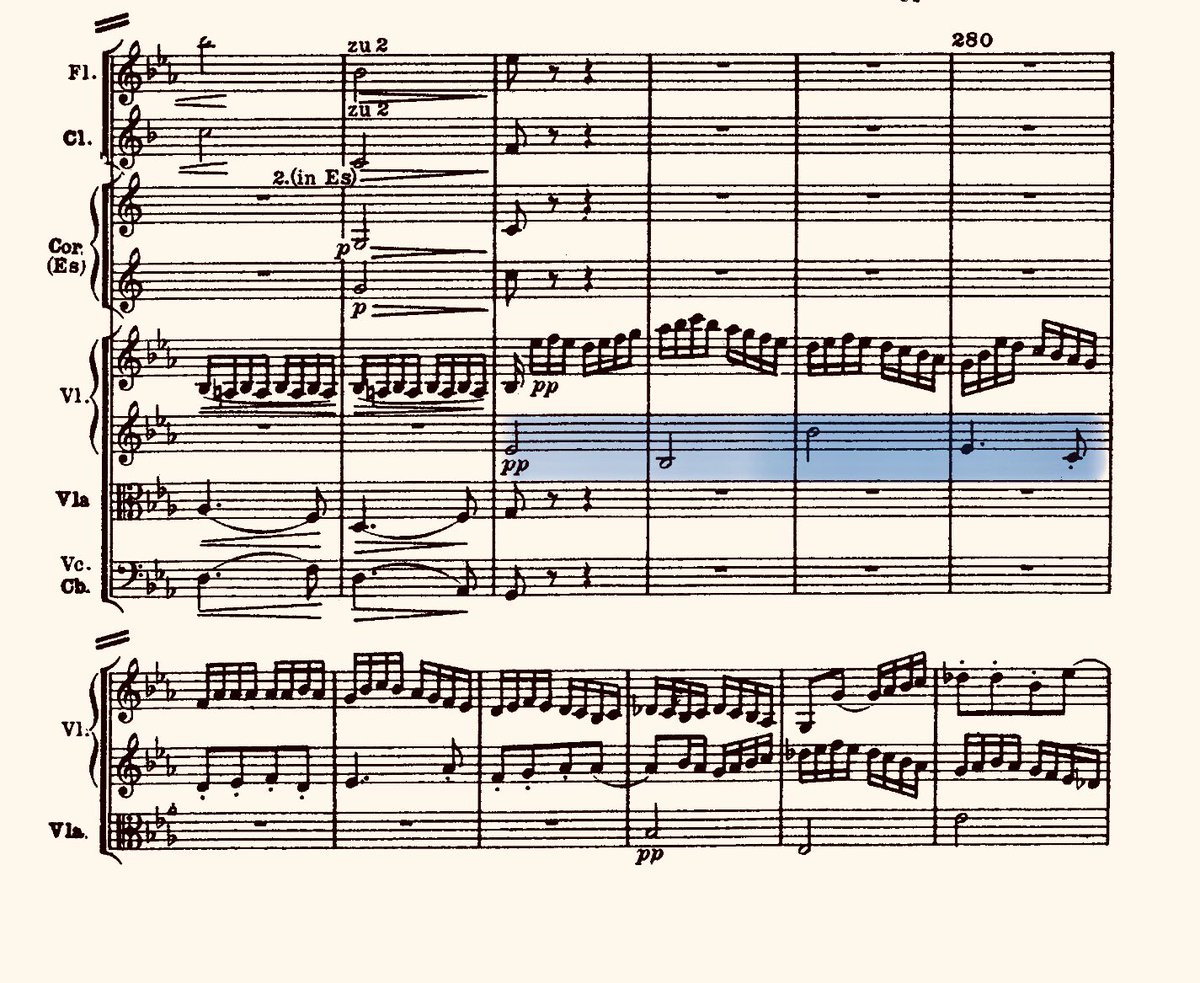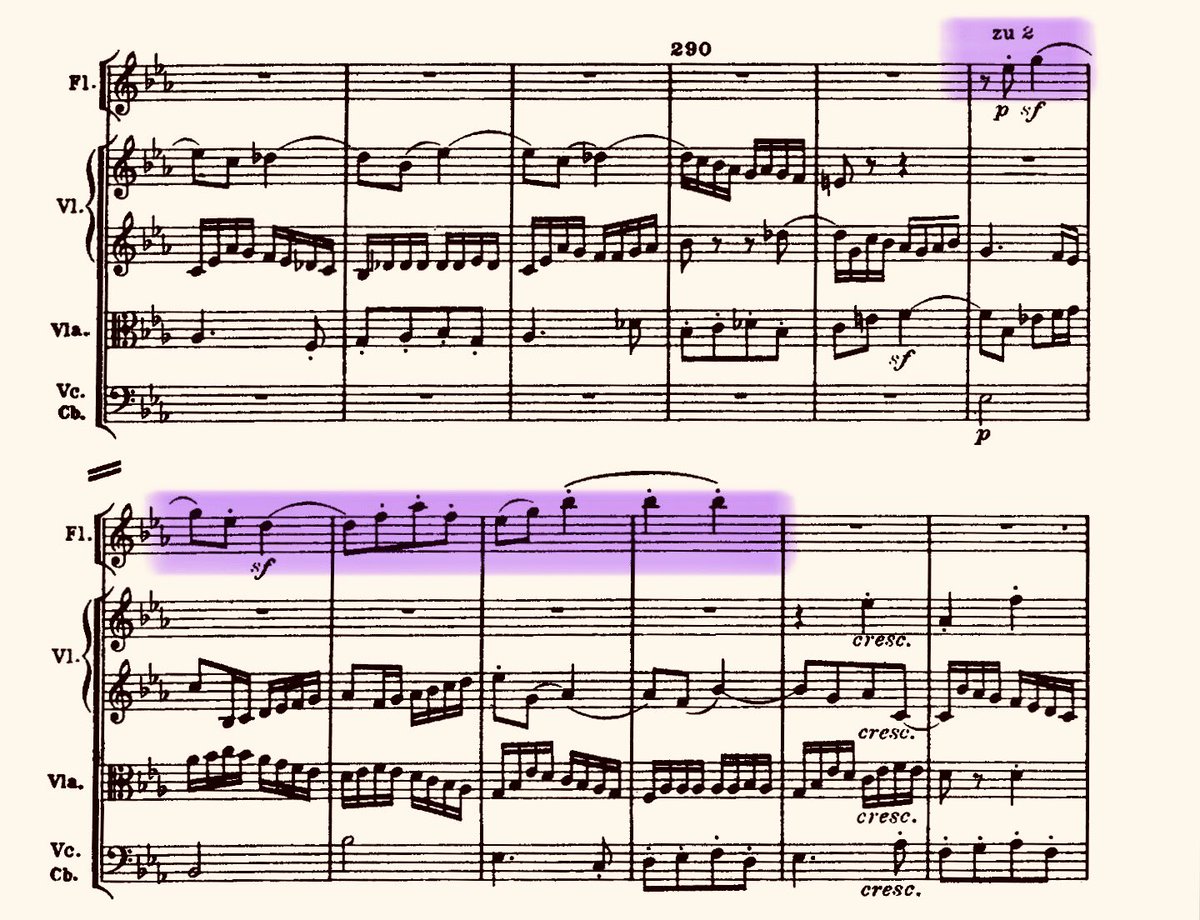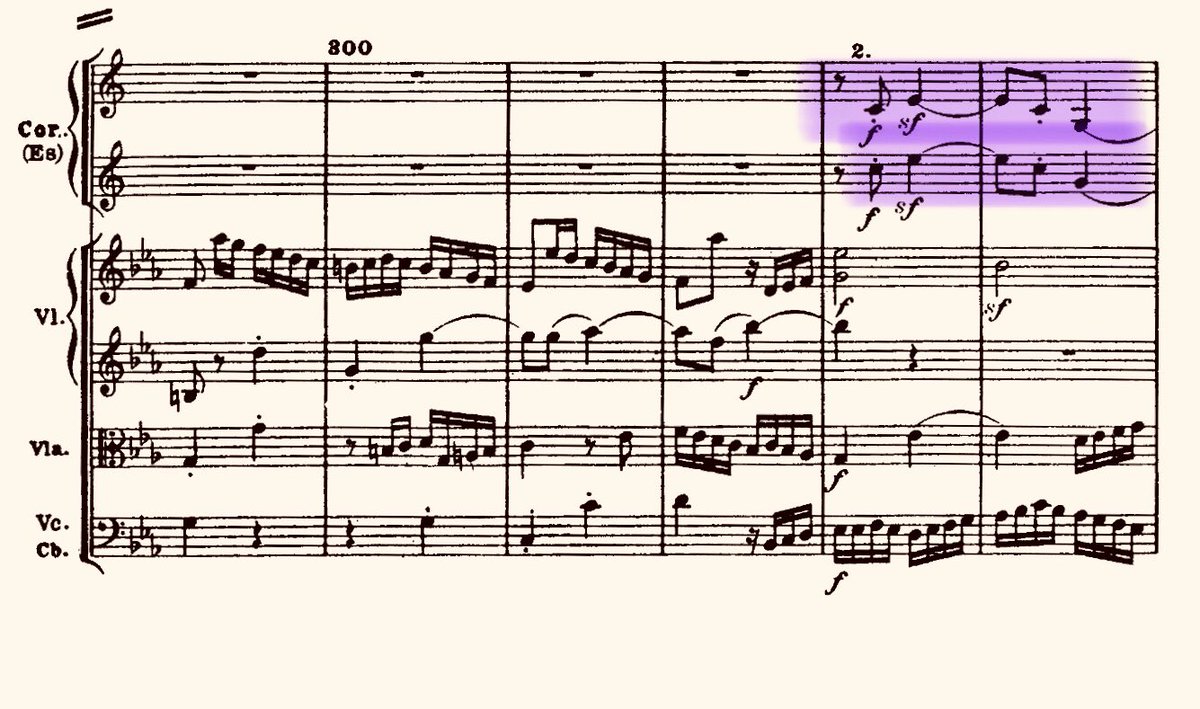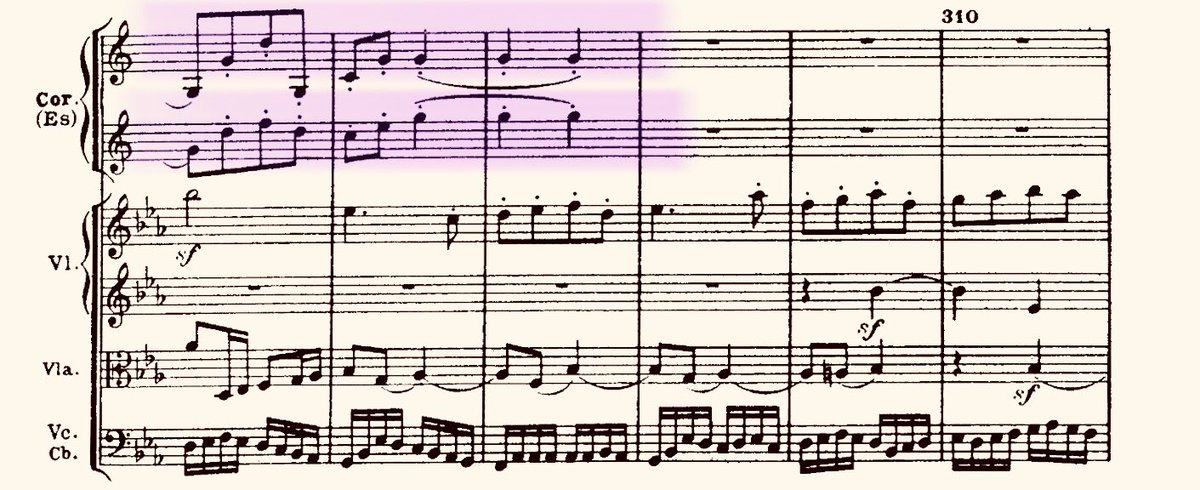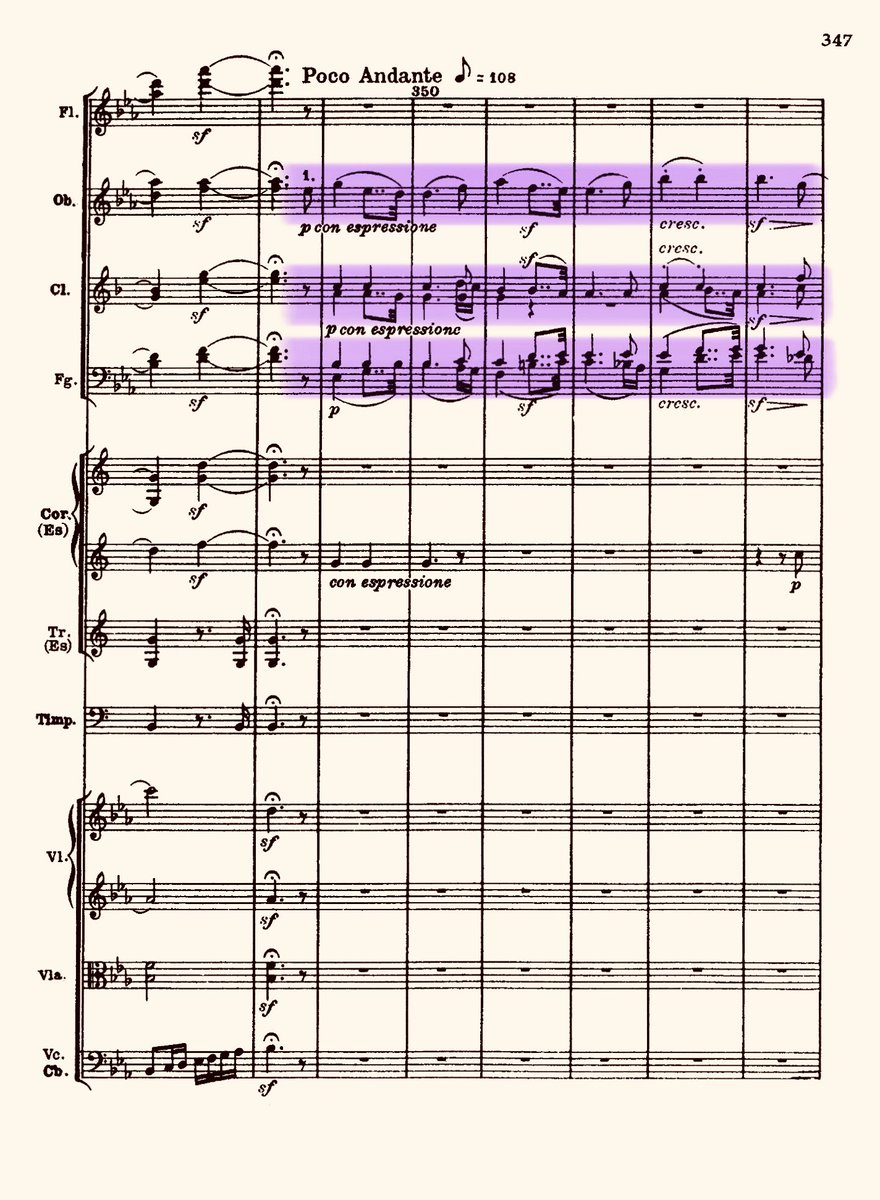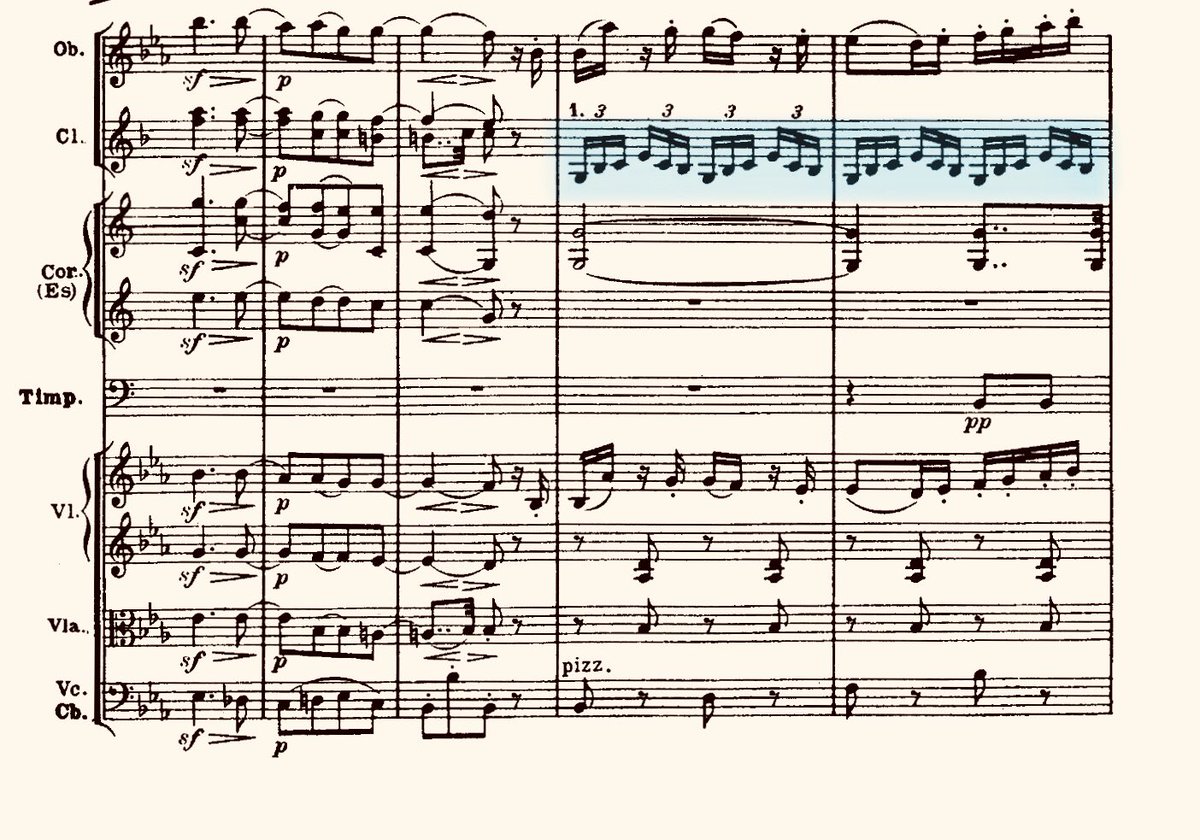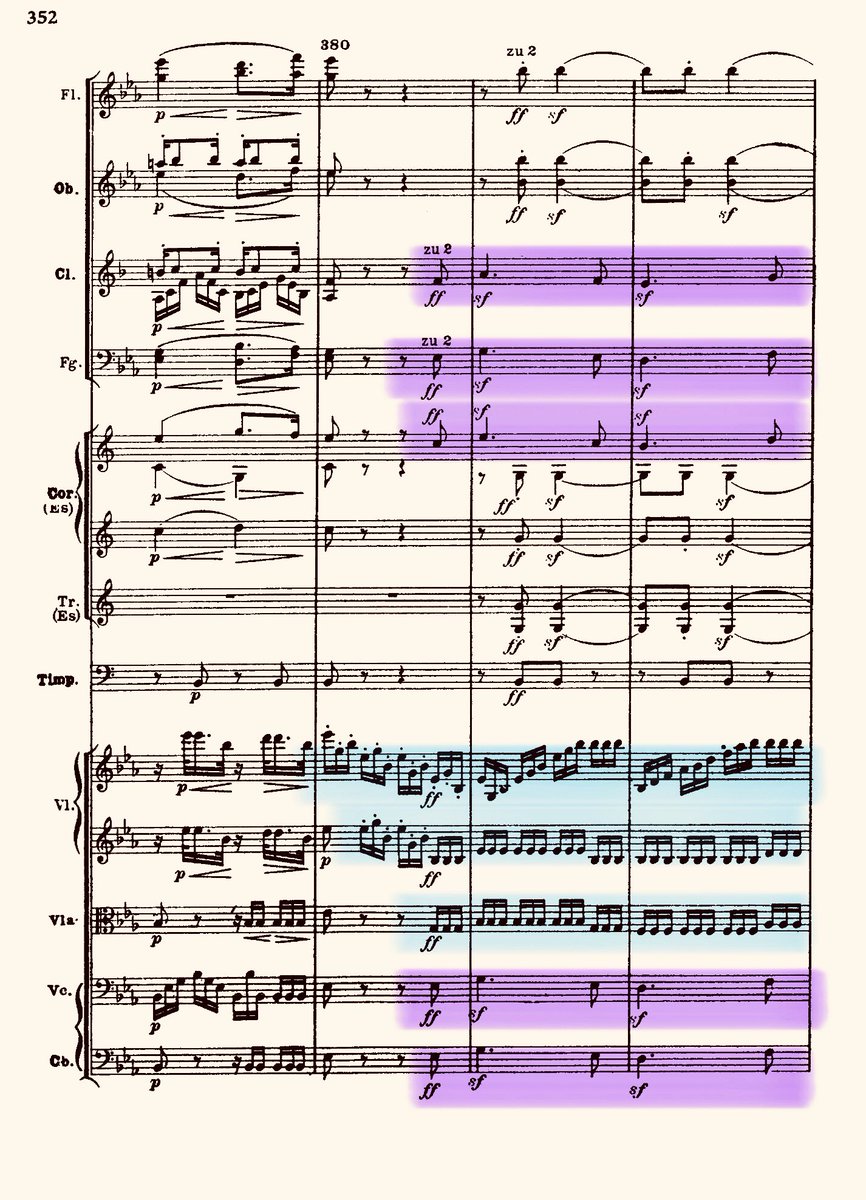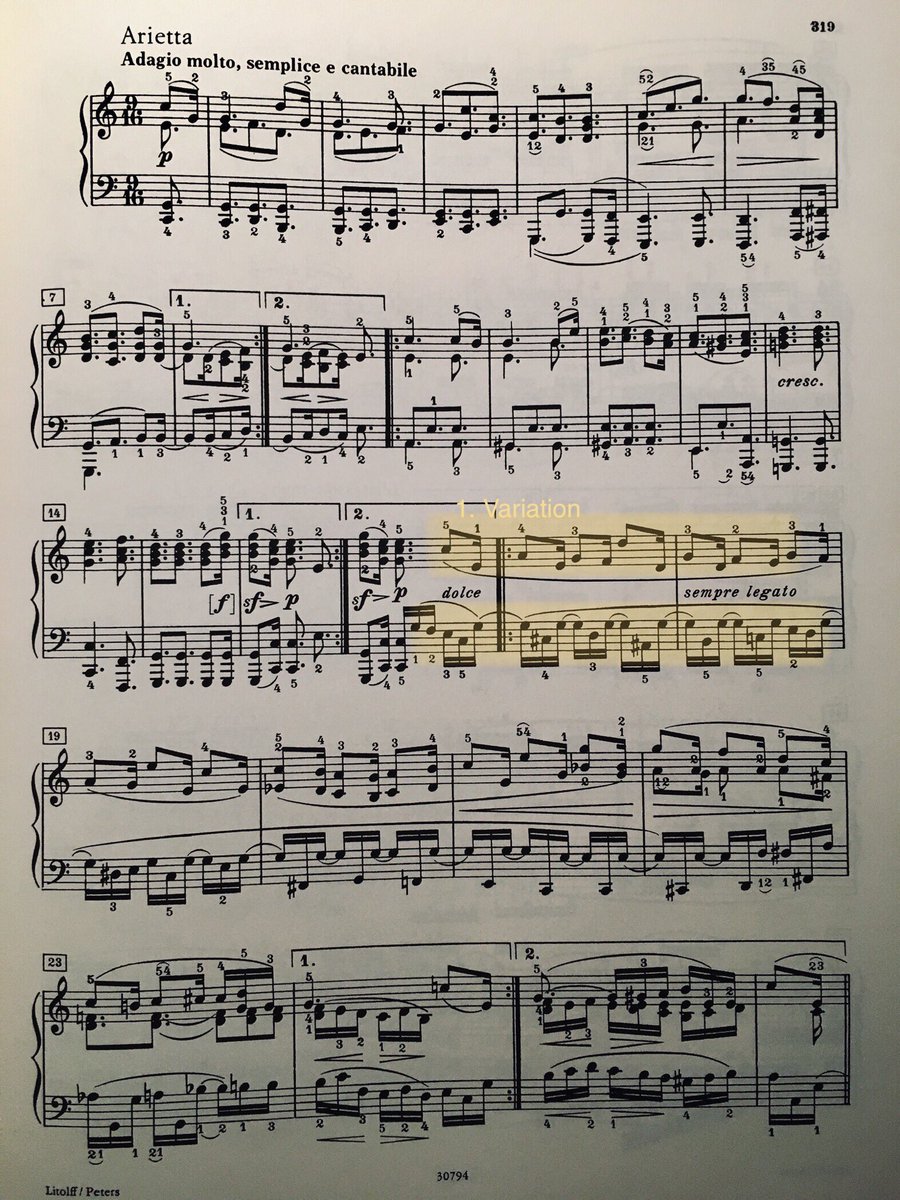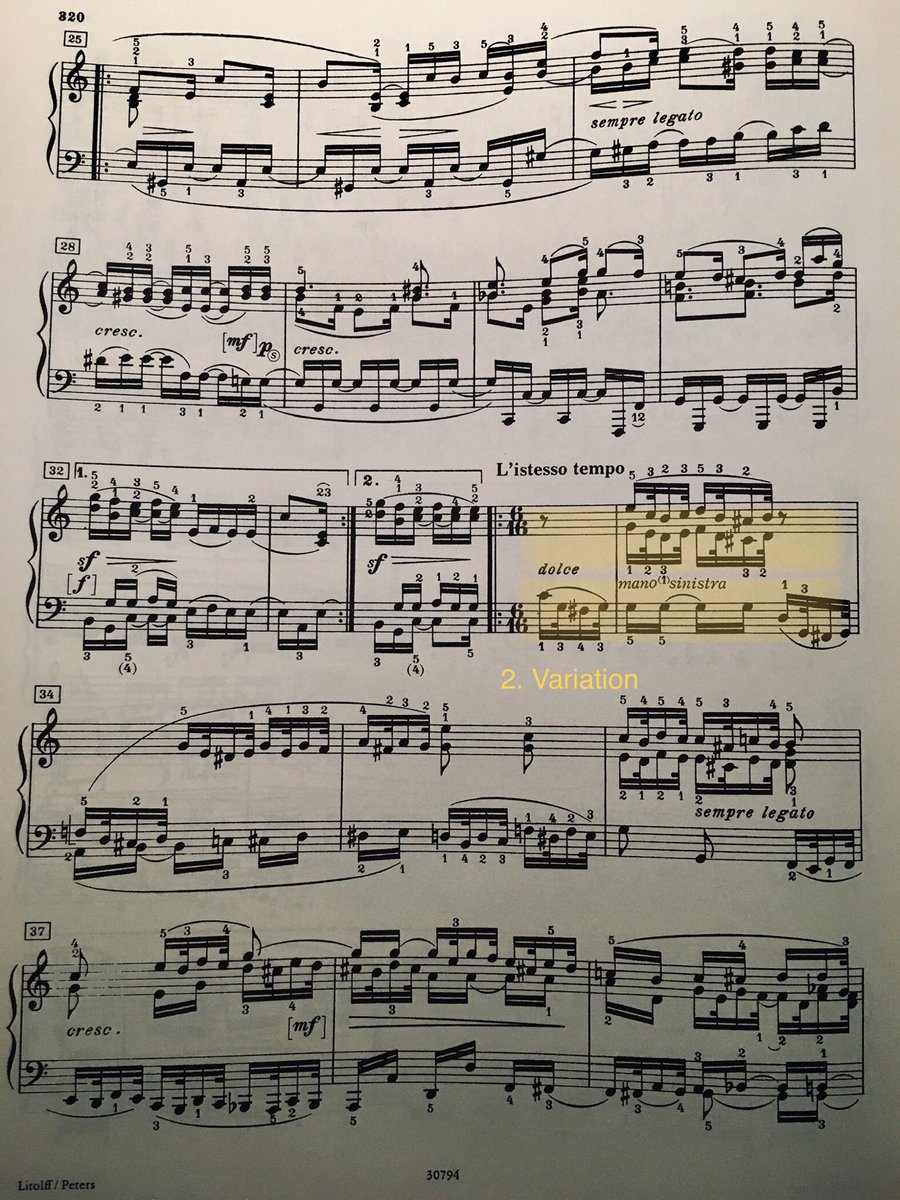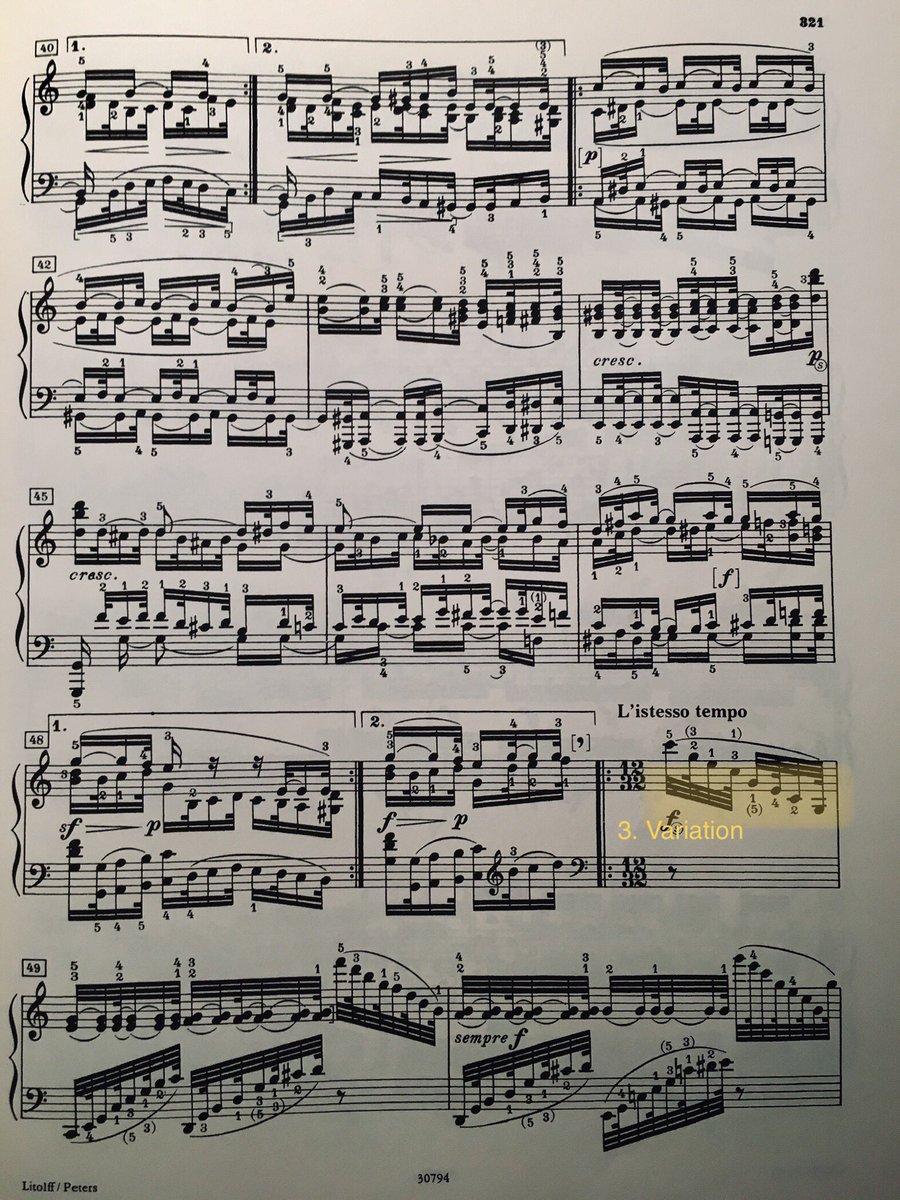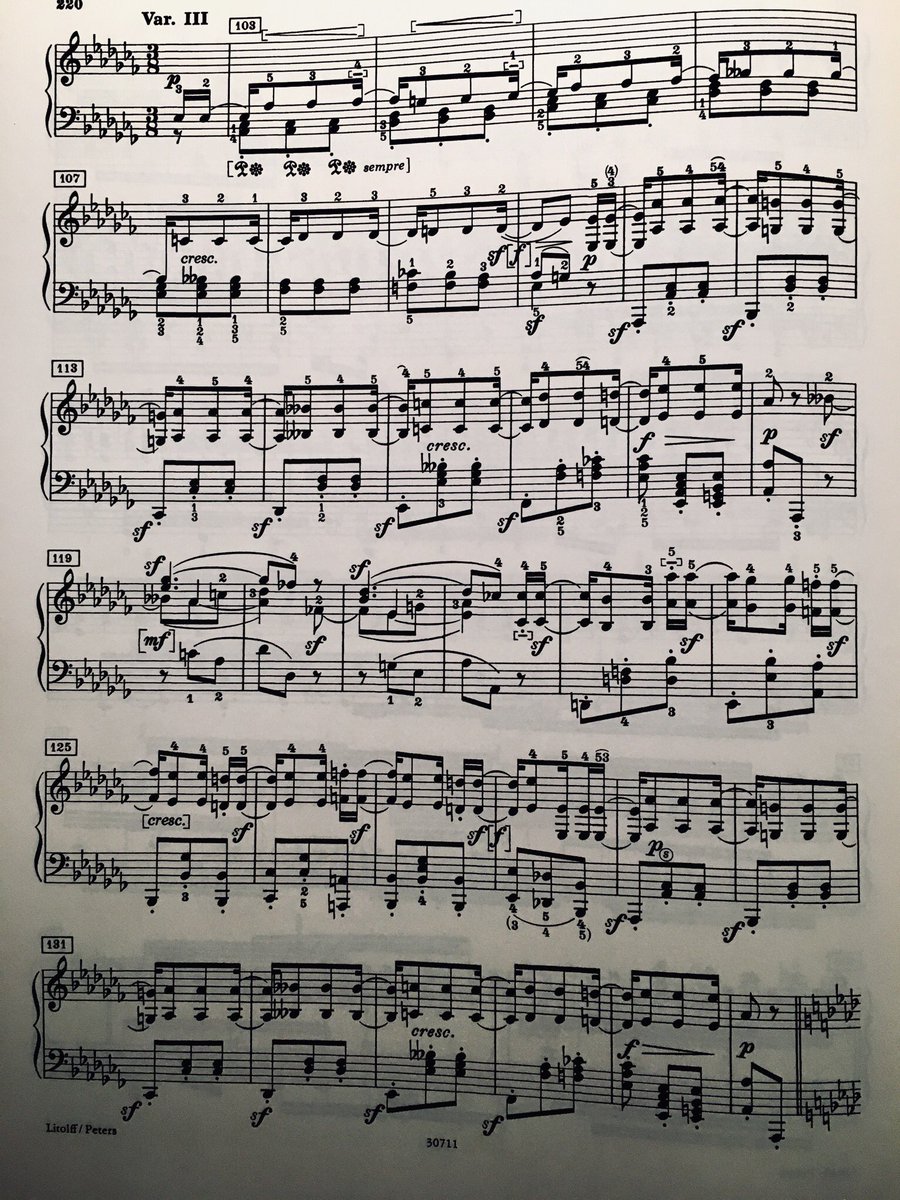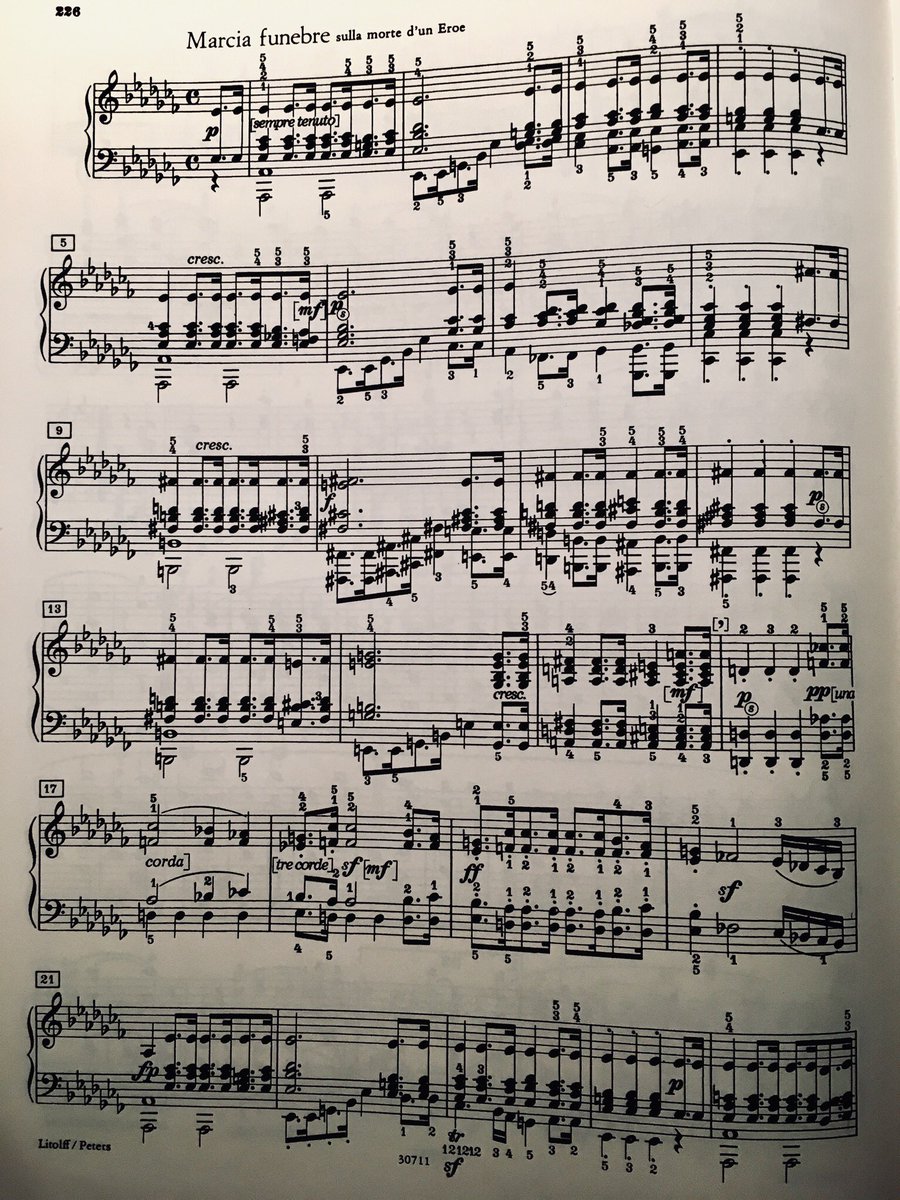On musical structure; seventh instalment: Theme and Variations form
Onward with the journey through the wild waves of musical form; to a form of which the basic structural principle for the whole piece is the variation of thematic material.
1/50
Onward with the journey through the wild waves of musical form; to a form of which the basic structural principle for the whole piece is the variation of thematic material.
1/50
In the Theme and Variations form, the composer casts new light on the theme and its components in every one of its segments. Like holding a gemstone into the light and, by turning it in one‘s hand, constantly discovering different refractions and reflections of the light.
2/50
2/50
Monotony is avoided here through variation rather than digression, though some variations may digress from the basic material more than others.
3/50
3/50
To illustrate this point, let me give an example first of a variation that more closely resembles the theme and then of a variation that is markedly different from the theme‘s basic presentation.
4/50
4/50
This variation is from Mozart‘s “Douze Variations sur & #39;Ah vous dirai-je, maman& #39;” and is the second variation of the set, starting at 0:54. In this variation, Mozart richly embellishes the theme, but the theme is still clearly recognisable:
5/50 https://m.youtube.com/watch?v=7FU189_fW7Q">https://m.youtube.com/watch...
5/50 https://m.youtube.com/watch?v=7FU189_fW7Q">https://m.youtube.com/watch...
Then, for a less recognisable variation, let us take the famous eighteenth variation in Rachmaninoff‘s Rhapsody on a theme by Paganini. Here is the original theme:
6/50 https://m.youtube.com/watch?v=pCqv5vm2iz4">https://m.youtube.com/watch...
6/50 https://m.youtube.com/watch?v=pCqv5vm2iz4">https://m.youtube.com/watch...
In this variation, however, the original theme is inverted (turned upside-down), and this generates a rather different contour and shape. To complete the transformation, the tempo of this variation is much slower (15:27):
7/50 https://m.youtube.com/watch?v=HvKTPDg0IW0">https://m.youtube.com/watch...
7/50 https://m.youtube.com/watch?v=HvKTPDg0IW0">https://m.youtube.com/watch...
This brings me to another important structural feature of variations form; the tendency for variations that more closely resemble the theme either to be placed closer to the theme, thus allowing for a fluent transition from the theme to more remote variations...
8/50
8/50
...or as a structural agent recurring throughout the work in the style (though not the shape) of a rondo, with intervening episodes resembling digressions, though they are of course merely strong variations on the same theme.
9/50
9/50
Thus, the overarching structural principles of a Theme and Variations control the order of the variations and the way in which they build or break momentum; how they offer a gradual, milder metamorphosis or a sudden, strong contrast.
10/50
10/50
In Bach‘s Goldberg Variations, the variations have a certain order in which they are presented; every third variation is a canon, every fourth a genre piece—among which are several baroque dances and a French overture—and every fifth is a vivacious “arabesque”.
11/50
11/50
This continuous cycle is broken with the thirtieth variation, which is not a canon but a quodlibet, a sort of musical potpourri combining several folk-song melodies...
12/50 https://m.youtube.com/watch?v=Cwas_7H5KUs">https://m.youtube.com/watch...
12/50 https://m.youtube.com/watch?v=Cwas_7H5KUs">https://m.youtube.com/watch...
The other great piano work in this vein is the set of variations by Beethoven known as the “Diabelli Variations” where the tiniest and (seemingly) most insignificant elements of the theme are used to build a new variation.
13/50 https://m.youtube.com/watch?v=dokkniOwSlQ">https://m.youtube.com/watch...
13/50 https://m.youtube.com/watch?v=dokkniOwSlQ">https://m.youtube.com/watch...
I believe it was Alfred Brendel who wrote that these variations are, according to Beethoven biographer Wilhelm von Lenz, “a satire on their theme”.
14/50
14/50
With regards to the structural element as we see them in Bach, Beethoven& #39;s set has no such strict order in his variations, but there are three variations that are more closely related to the theme, serving to remind the listener of the thematic material.
15/50
15/50
This becomes a necessity, as many of the variations in this set barely recall the basic material (no. 22 is even a parody of “Notte e giorno faticar” from Mozart‘s Don Giovanni). The vast differences between variations necessitates this type of structural anchoring.
16/50
16/50
These three structurally important variations are the first, the fifteenth and the twenty-fifth. Each inserted at a tactical position in the structure.
17/50
17/50
Another great piece in variations form by Beethoven is the final movement of the Third Symphony. I shall attempt to outline its individual variations:
18/50 https://m.youtube.com/watch?v=F9XECkrMVeE">https://m.youtube.com/watch...
18/50 https://m.youtube.com/watch?v=F9XECkrMVeE">https://m.youtube.com/watch...
Immediately of interest is the theme; which originates from Beethoven‘s 12 Contredanses and is also notably employed in the “Eroica variations”, another variations piece, as well as in his ballet “the Creatures of Prometheus”.
19/50 https://m.youtube.com/watch?v=VNyd8fRy6BA">https://m.youtube.com/watch...
19/50 https://m.youtube.com/watch?v=VNyd8fRy6BA">https://m.youtube.com/watch...
For its theme, this movement takes the bass line of the Contredanse (the second note transposed up by an octave), varying it twice before actually presenting the melody from the 12 Contredanses in the third variation.
20/50
20/50
After a big orchestral flourish, the first presentation of the theme consists of two simple eight-bar phrases, each repeated with a slight variation to make four.
21/50
21/50
The first variation presents the material in the second violins, now no longer plucked, but broadly bowed. Accompanying the theme are various motivic fragments, of which the repeated three-note figure will remain especially prominent throughout the movement.
22/50
22/50
In the second variation, the theme is embellished by triplet figurations below it. taking this step, Beethoven removes us further from the initial quiet presentation and prepares for variations that will further increase the textural complexity and powerful momentum.
23/50
23/50
Following this variation, Beethoven finally presents us with the aforementioned melody, to which the theme—indeed!—acts as the bass line.
24/50
24/50
A transitory passage spanning nine bars connects this third variation to a fugal episode, which prominently uses the first four notes of the theme and the three-note motif figure already used in the first variation; along with a complicated set of other motives.
25/50
25/50
The next variation starts with a statement of the Contredanse melody before varying it by embellishment and presenting a brilliant flute solo. The variation ends by a loud tutti passage based exclusively on the three-note motif.
26/50
26/50
A march-like variation ensues in g minor; contrasting strongly in both key and rhythm. The original theme, however, is still present in the bass.
27/50
27/50
After this variation, half of the melody from the third variation is repeated and transitions to the next variation, again a complicated fugal passage.
28/50
28/50
This fugal variation uses fast figurations in the strings, but an inversion of the theme is clearly recognisable beneath it.
This complicated variation spans almost eighty bars, in part due to its complexity, making it two and a half times as long as the original theme
29/50
This complicated variation spans almost eighty bars, in part due to its complexity, making it two and a half times as long as the original theme
29/50
In this variation, along with the fugal subjects, the flute and horn present variations of the contredanse melody where the beat is shifted. Note how this both effectively alters and recalls this material, which rises over the texture of the fugue.
30/50
30/50
After this intense and thickly textured variation, the momentum is broken by a variation—marked “poco andante”—which seems like a gentle chorale; creating a sense of repose.
31/50
31/50
Note that the theme is subsequently embellished by triplets in the clarinet part, again slightly intensifying the texture to prepare for a more powerful variation.
32/50
32/50
Still in poco andante, the ensuing variation of the Contredanse melody is more broad and majestic, a statement by the horns and trumpets. While triplet figurations in the strings bubble underneath.
33/50
33/50
A transition follows, after which the opening flourish of the movement is heard once more; this time followed by a gloriously triumphant final section closing the movement.
34/50
34/50
Note that the whole structure is marked by the growth (typical of Beethoven) from simple, germinal motives, the potential of which is exploited to the hilt.
35/50
35/50
A similar intensification of the texture governs the structure of the last movement of Opus 111; Beethoven‘s final piano sonata:
36/50 https://m.youtube.com/watch?v=XW9e28bYbJA&t=9m01s">https://m.youtube.com/watch...
36/50 https://m.youtube.com/watch?v=XW9e28bYbJA&t=9m01s">https://m.youtube.com/watch...
Here, the theme starts in the unusual time signature of 9/16, and presents a simple and charming theme. With every successive variation, however, the note values become smaller.
37/50
37/50
This is much like the introduction of triplet figurations in the Eroica which serve to increase the momentum of the movement and prepare for the more intense variations.
38/50
38/50
An interesting fact is that the third variation, noteworthy for its Dionysian, almost frenzied character, has often been compared to Jazz music; András Schiff, however, saw reason to disagree with this notion:
39/50 https://m.youtube.com/watch?v=wk-iqxqixhY">https://m.youtube.com/watch...
39/50 https://m.youtube.com/watch?v=wk-iqxqixhY">https://m.youtube.com/watch...
Of course, this movement is quite large, but—having only five variations—it nonetheless shows that a piece in variations form needs not necessarily be comprised of twenty or thirty variations.
40/50
40/50
A much smaller example (and of great charm), is the set of seven variations on the hymn “God save the King”, also by Beethoven:
41/50 https://m.youtube.com/watch?v=NOds7jLtXnI">https://m.youtube.com/watch...
41/50 https://m.youtube.com/watch?v=NOds7jLtXnI">https://m.youtube.com/watch...
Amongst the somewhat smaller variation forms, the opening movement of Beethoven‘s Op. 26, with five variations, is of great interest due to its structural role within the entire sonata.
42/50 https://m.youtube.com/watch?v=pbndMA0IzUQ">https://m.youtube.com/watch...
42/50 https://m.youtube.com/watch?v=pbndMA0IzUQ">https://m.youtube.com/watch...
First, it is unusual for a sonata to open with a variations movement. It is not, however, without precedent as Mozart‘s Eleventh piano sonata also starts with a beautiful variations movement.
43/ 50 https://m.youtube.com/watch?v=FZ1mj9IaczQ">https://m.youtube.com/watch...
43/ 50 https://m.youtube.com/watch?v=FZ1mj9IaczQ">https://m.youtube.com/watch...
It is interesting to note that this variations movement in the Beethoven sonata seems, in its third variation, to foreshadow the “Marcia Funebre” third movement.
44/50
44/50
Recording: https://m.youtube.com/watch?v=MTEWiOTXPPw">https://m.youtube.com/watch...
I believe András Schiff noted that the movement seems to be a miniature model of the sonata as a whole. Indeed, this movement clearly shows the coherence between its material and that of the other movements.
45/50
45/50
Finally, I would like to briefly discuss a slightly more complex approach to the basic variations form frequently used by Haydn which is appropriately named “double variations form”.
46/50
46/50
It simply means that, instead of presenting variations on a single theme, there are two themes at the outset, both of which are varied in turn.
47/50
47/50
Haydn used this structure notably in his variations in f minor, as well as in a great number of other compositions.
48/50 https://m.youtube.com/watch?v=caiBJxBTAdA">https://m.youtube.com/watch...
48/50 https://m.youtube.com/watch?v=caiBJxBTAdA">https://m.youtube.com/watch...
To end today‘s lengthy thread, I would like to share a last set of variations simply to enjoy which I simply could not withhold; Brahms‘ variations on a theme of Haydn:
49/50 https://m.youtube.com/watch?v=-FtF6zjFh9k">https://m.youtube.com/watch...
49/50 https://m.youtube.com/watch?v=-FtF6zjFh9k">https://m.youtube.com/watch...
So, with this for tonight I take my leave,
And bid you, friends, to lend your ears,
To Mr Brahms‘ finely crafted masterpiece,
Note the structure closely, where‘er it veers.
And for now, I wish you all a pleasant eve.
50/50
And bid you, friends, to lend your ears,
To Mr Brahms‘ finely crafted masterpiece,
Note the structure closely, where‘er it veers.
And for now, I wish you all a pleasant eve.
50/50

 Read on Twitter
Read on Twitter

